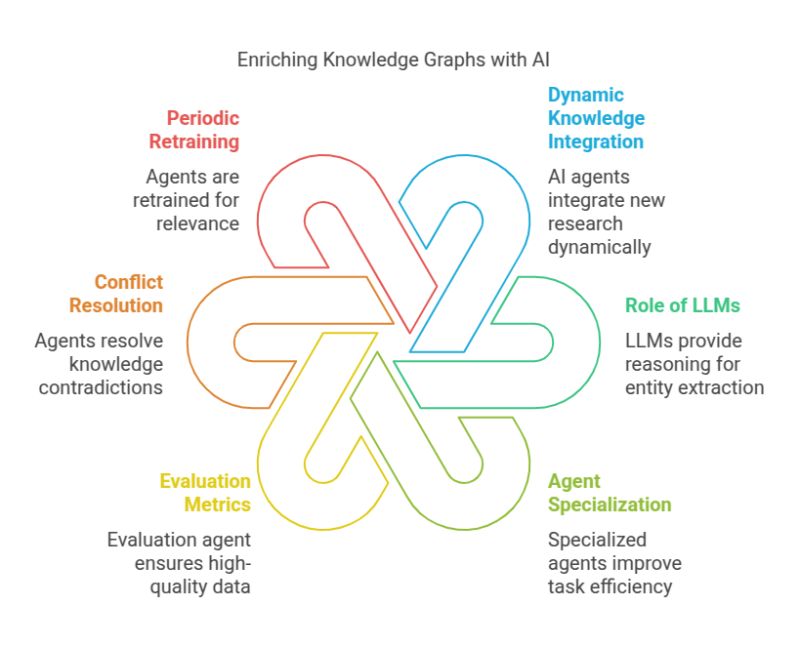- 26
- Apr
- 2025
Knowledge Graph Enrichment Management – Highlights
- Posted Byadmin
- InUncategorized

Knowledge Graph Enrichment Management – Highlights
AI systems can mirror human-like processes of information gathering, analysis, and synthesis—but at scales impossible for human researchers to achieve individually. As research continues its rapid expansion, such multi-agent systems will likely become essential tools for maintaining comprehensive, up-to-date knowledge graphs.
Large language models (LLMs) serve as the technological foundation for these agents, providing the reasoning capabilities necessary to process complex research content. By periodically updating these graphs, the system adapts to emerging terminology and methodologies in the field of interest.
Knowledge Graph Management: Keeping up with new research papers daily creates significant challenges for researchers.
Multi-Agent Approach: The system uses as much as 10 specialized agents to update the knowledge graph efficiently.
Specialized Tasks: Each agent handles specific jobs like finding documents, summarizing content, extracting key information, and resolving conflicts.
Quality Control: An evaluation agent measures how well new information fits into the existing knowledge base.
Handling Contradictions: A dedicated agent works to resolve conflicts between new research and existing knowledge.
Ongoing Improvement: Agents are regularly retrained to stay current with developments in AI research.
Organized Structure: The system uses a hierarchical design to manage complexity and work efficiently.
Key Insights
Integrating New Knowledge: AI agents actively process, summarize, and combine information from multiple sources, requiring advanced language processing abilities.
Using Large Language Models: LLMs help build knowledge graphs by reasoning through complex documents to find important concepts and relationships.
Benefits of Specialization: Breaking tasks among specialized agents reduces complexity and improves performance when handling large volumes of research data.
Measuring Quality: The evaluation agent uses weighted signals to ensure only high-quality information enters the knowledge graph.
Resolving Knowledge Conflicts: The conflict resolution agent facilitates discussions between agents to address contradictions, similar to human reasoning.
Regular Updates: Agents need periodic retraining to understand new research terminology and methods.
Structured Organization: The hierarchical design makes the system easier to manage, update, and maintain as the research landscape evolves.
Conclusion
The multi-agent system described transforms the overwhelming challenge of AI research integration into a manageable process through specialized agents working in a hierarchical framework. By evaluating information quality, resolving conflicts, and adapting through retraining, this approach ensures knowledge graphs remain accurate despite the rapid pace of publication. High implementation costs are requiring us to review our architecture.